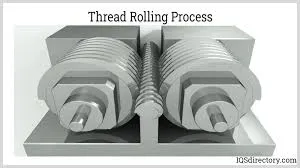
-
 Afrikaans
Afrikaans -
 Albanian
Albanian -
 Amharic
Amharic -
 Arabic
Arabic -
 Armenian
Armenian -
 Azerbaijani
Azerbaijani -
 Basque
Basque -
 Belarusian
Belarusian -
 Bengali
Bengali -
 Bosnian
Bosnian -
 Bulgarian
Bulgarian -
 Catalan
Catalan -
 Cebuano
Cebuano -
 Corsican
Corsican -
 Croatian
Croatian -
 Czech
Czech -
 Danish
Danish -
 Dutch
Dutch -
 English
English -
 Esperanto
Esperanto -
 Estonian
Estonian -
 Finnish
Finnish -
 French
French -
 Frisian
Frisian -
 Galician
Galician -
 Georgian
Georgian -
 German
German -
 Greek
Greek -
 Gujarati
Gujarati -
 Haitian Creole
Haitian Creole -
 hausa
hausa -
 hawaiian
hawaiian -
 Hebrew
Hebrew -
 Hindi
Hindi -
 Miao
Miao -
 Hungarian
Hungarian -
 Icelandic
Icelandic -
 igbo
igbo -
 Indonesian
Indonesian -
 irish
irish -
 Italian
Italian -
 Japanese
Japanese -
 Javanese
Javanese -
 Kannada
Kannada -
 kazakh
kazakh -
 Khmer
Khmer -
 Rwandese
Rwandese -
 Korean
Korean -
 Kurdish
Kurdish -
 Kyrgyz
Kyrgyz -
 Lao
Lao -
 Latin
Latin -
 Latvian
Latvian -
 Lithuanian
Lithuanian -
 Luxembourgish
Luxembourgish -
 Macedonian
Macedonian -
 Malgashi
Malgashi -
 Malay
Malay -
 Malayalam
Malayalam -
 Maltese
Maltese -
 Maori
Maori -
 Marathi
Marathi -
 Mongolian
Mongolian -
 Myanmar
Myanmar -
 Nepali
Nepali -
 Norwegian
Norwegian -
 Norwegian
Norwegian -
 Occitan
Occitan -
 Pashto
Pashto -
 Persian
Persian -
 Polish
Polish -
 Portuguese
Portuguese -
 Punjabi
Punjabi -
 Romanian
Romanian -
 Russian
Russian -
 Samoan
Samoan -
 Scottish Gaelic
Scottish Gaelic -
 Serbian
Serbian -
 Sesotho
Sesotho -
 Shona
Shona -
 Sindhi
Sindhi -
 Sinhala
Sinhala -
 Slovak
Slovak -
 Slovenian
Slovenian -
 Somali
Somali -
 Spanish
Spanish -
 Sundanese
Sundanese -
 Swahili
Swahili -
 Swedish
Swedish -
 Tagalog
Tagalog -
 Tajik
Tajik -
 Tamil
Tamil -
 Tatar
Tatar -
 Telugu
Telugu -
 Thai
Thai -
 Turkish
Turkish -
 Turkmen
Turkmen -
 Ukrainian
Ukrainian -
 Urdu
Urdu -
 Uighur
Uighur -
 Uzbek
Uzbek -
 Vietnamese
Vietnamese -
 Welsh
Welsh -
 Bantu
Bantu -
 Yiddish
Yiddish -
 Yoruba
Yoruba -
 Zulu
Zulu
Comparative Overview of Various Thread Rolling Techniques and Their Pricing Structure
Understanding Types of Thread Rolling and Their Price Lists
Thread rolling is a manufacturing process that shapes materials into threaded forms, which are essential in the production of screws, bolts, and other fasteners. This technique is widely recognized for its efficiency and ability to produce high-quality, durable threads with minimal waste. Understanding the various types of thread rolling processes can aid manufacturers in selecting the most suitable method for their needs, while also giving insights into the associated costs.
Types of Thread Rolling Processes
1. Flat Die Thread Rolling This type of rolling uses flat dies to create threads. It involves two cylindrical rollers that press against the workpiece, forming threads as the material is fed through. Flat die rolling is particularly well-suited for producing external threads on rods and is recognized for its high precision and surface finish. Due to its efficiency, it often comes with lower production costs, making it an attractive option for large-scale manufacturing.
2. Circular Thread Rolling In this method, the workpiece is rolled between two circular rotating dies. This process can be used for both internal and external threads. Circular thread rolling is ideal for creating complex thread profiles and is often used in the automotive and aerospace industries due to its ability to produce high-strength fasteners.
3. Rotary Thread Rolling Unlike conventional thread rolling that utilizes flat dies, rotary thread rolling employs a rotary method to form threads. This method is especially useful for producing small-diameter threads and is often used in medical device manufacturing. While it can be more expensive than flat die rolling, the precision and adaptability of rotary thread rolling can justify the costs in niche markets.
4. Plunge Thread Rolling This method involves a plunging motion to create threads. It is particularly effective for producing short and deep threads. While plunge thread rolling can come with higher costs due to the complexity of the machinery involved, it offers a unique advantage in producing threads that meet specific depth requirements.
Factors Influencing Price Lists
types of thread rolling pricelist

When considering thread rolling options, various factors influence the pricing structure
- Material Type Different materials, such as steel, aluminum, or plastic, require specific rolling techniques and machinery. Harder materials may necessitate more advanced equipment which can increase costs.
- Production Volume The quantity of items being produced can significantly impact pricing. High-volume orders typically benefit from lower per-unit costs due to economies of scale, while smaller runs may incur higher costs due to setup and downtime.
- Complexity of Threads More intricate thread designs or special specifications may require additional tooling and processing time, raising the overall expense. Simple, standardized threads generally incur lower costs.
- Labor and Overhead Labor costs can vary based on the level of skill required to operate the machinery, as well as the overhead costs of the manufacturing facility.
Conclusion
As the demand for efficient and quality fasteners grows, understanding the various types of thread rolling and their respective price implications becomes essential for manufacturers. Each type of rolling process offers unique benefits and costs, making it crucial for businesses to analyze their specific needs and production capabilities. Investing time and resources into selecting the right thread rolling technique can lead to improved product quality, reduced waste, and ultimately, increased profitability in the competitive fastener market.
